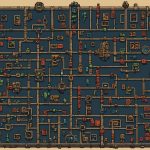Overview of Home Security Solutions
Modern households are increasingly embracing smart home technology to enhance their security setups. This trend stems from the importance of safeguarding one’s home and the appeal of real-time alerts in monitoring systems. Notably, smart security systems outshine traditional options due to their advanced features and responsiveness.
Traditional security systems often rely on audible alarms that merely deter intruders. In contrast, smart security systems incorporate a network of devices designed for comprehensive home security. These systems utilise real-time alerts that notify homeowners the instant something unusual occurs, allowing for swift action.
Additional reading : Transform Home Heating: Master Zone Temperature with Smartphone Precision
Smart systems often feature remote monitoring, enabling homeowners to view their property’s status through their smartphones. This capability significantly enhances security by offering continuous oversight, regardless of the homeowner’s physical location. Remote monitoring also allows for viewing security footage and issuing commands to smart devices.
Real-time alert notifications serve as a critical advantage in smart home technology. They provide immediate insights into potential threats or disturbances, allowing users to decide whether to contact authorities. By prioritising real-time communication, smart systems ensure that homeowners remain informed and prepared to respond effectively to emergencies. These advancements underscore the benefits of investing in smart home security solutions.
Also read : The Ultimate Guide: Transform Your Smartphone into a Smart Baby Monitor System
Features of Smart Home Security Systems
Harnessing the power of Smart Security Features is crucial for a robust security setup. Notably, Instant Alerts keep homeowners in the know, providing timely notifications about potential breaches. These alerts come through various channels, such as push notifications on smartphones or email alerts, ensuring you’re always informed, no matter where you are.
Instant Alert Notifications
Instant alert notifications are pivotal in modern security systems, offering peace of mind through real-time updates. They help you quickly detect suspicious activity and take immediate action, reducing the risk of harm or damage.
Mobile App Integration
Seamless Mobile App Integration ensures that you have on-the-go control over your smart security, adding convenience to safety. These apps often allow for adjusting settings, monitoring live feeds, and even speaking through doorbell systems, facilitating instant, informed responses to alerts.
Video Surveillance Capabilities
Enhanced Video Surveillance Capabilities form the backbone of many smart systems, with cameras that provide clear images and allow for remote viewing. High-definition quality and convenient storage options like cloud services ensure crucial footage is readily available. This enables users to verify alarms and maintain a comprehensive security log, which is vital for effective security management.
Comparing Popular Home Security Systems
In the realm of Home Security Comparisons, it’s vital to understand the landscape of Best Smart Systems available today. Prominent players such as Ring, Nest, and Arlo dominate this sphere with varying features tailored to different user needs.
Key Players in the Market:
- Ring: Offers comprehensive systems with video doorbells and spotlight cameras. Known for ease of use and affordability.
- Nest: Provides advanced integration with other smart devices, making it ideal for tech-savvy homeowners.
- Arlo: Specialises in wire-free cameras, known for flexibility and top-notch video quality.
Feature-by-Feature Comparison
When evaluating these systems, consider important factors such as camera resolution, ease of installation, and smart integration capabilities. For instance, Nest systems excel in seamless integration with Google products. Meanwhile, Arlo’s video quality stands out, particularly for outdoor surveillance.
Summary of User Ratings and Experiences
According to user reviews, Ring systems are praised for versatility and simple installation. Nest users appreciate the sophisticated integration, while Arlo is preferred for exceptional video quality. Each system has its strengths, warranting careful assessment to align with individual security needs. Embrace user reviews to gauge reliability and satisfaction, ensuring you choose a system that meets your expectations.
Setting Up Your Smart Security System
Implementing a smart security system can enhance your home security with ease and efficiency. Understanding the installation guide and having a clear setup instructions is crucial to ensure a smooth process. Here’s a deeper look into what it entails:
Preparing for Installation
Before diving into the setup process, gather necessary tools like a screwdriver, drill, and a reliable ladder. Ensure your Wi-Fi network is stable, as most smart home technology relies on it. Choose optimal locations for your devices, considering factors like coverage and accessibility.
Step-by-Step Setup Process
Follow detailed setup instructions provided by the manufacturer. Generally, this includes:
- Unboxing and inspecting items for any visible damage.
- Mounting devices securely using the appropriate brackets.
- Connecting to Wi-Fi by following in-app prompts.
- Configuring settings through the mobile app to customise alerts and notifications.
Troubleshooting Common Installation Issues
Encountering problems? Ensure devices are within Wi-Fi range, as connectivity issues are common. Reset the device or app if you’re unable to pair successfully. Checking device compatibility with your current systems can prevent many installation hassles. Keep customer support contacts handy for persistent issues.
Maximizing Your Home Security Setup
Optimizing your home security setup goes beyond mere installation; it involves implementing strategic enhancements and practising diligent maintenance. Maintaining a robust security posture requires you to implement a series of targeted home security tips and regularly assess and update your system.
Strengthening Overall Security
Initiating optimization strategies starts with evaluating your current setup, identifying potential vulnerabilities, and addressing them promptly. Use a layered defense approach: ensure all entry points have security measures in place, such as sensors, cameras, and reinforced locks. Consider extending the security perimeter by employing best practices like integrated lighting systems and smart locks that automatically secure doors.
Routine Maintenance and Updates
Commit to routine maintenance to avoid unexpected system failures. Regularly update software to benefit from the latest security enhancements and fix any vulnerabilities. Physical checks ensure that all devices, such as cameras and sensors, function properly and are well-positioned.
Effective Use of System Features
Unlock the full potential of your system by exploring its functionality. Optimization strategies suggest personification of alerts to match your lifestyle, allowing for seamless decision-making in real-time scenarios. Make use of automation features like scheduling cameras or routine checks to ensure constant vigilance without manual oversight.
Cost and Value of Smart Home Security Systems
The financial commitment to smart home security systems requires careful consideration of both initial and ongoing costs. Understanding the pricing can guide you in making a valuable long-term investment.
Initial Setup Costs
Initial costs can vary widely depending on the system’s complexity and features. Basic systems may start from a few hundred pounds, while advanced setups including multiple cameras, sensors, and smart locks, can exceed a thousand pounds. Be mindful of additional costs for essential items such as subscription services for real-time alerts or cloud storage.
Long-Term Investment Considerations
Investing in smart security is not merely an upfront expense; it’s a long-term commitment. The value of home security systems is often measured through enhanced safety and peace of mind. Evaluating these benefits alongside potential savings on insurance premiums and increased property value can offer a more comprehensive picture of your investment’s worth.
Comparing Costs of DIY vs. Professional Installation
When budgeting for security, decide between DIY installations and hiring professionals. DIY systems generally cost less and offer flexibility, but might lack the precision of professional setups. Professional installation, although more expensive, ensures optimal performance and peace of mind, making it a worthy consideration. Choose according to your financial plan and desired level of security.











